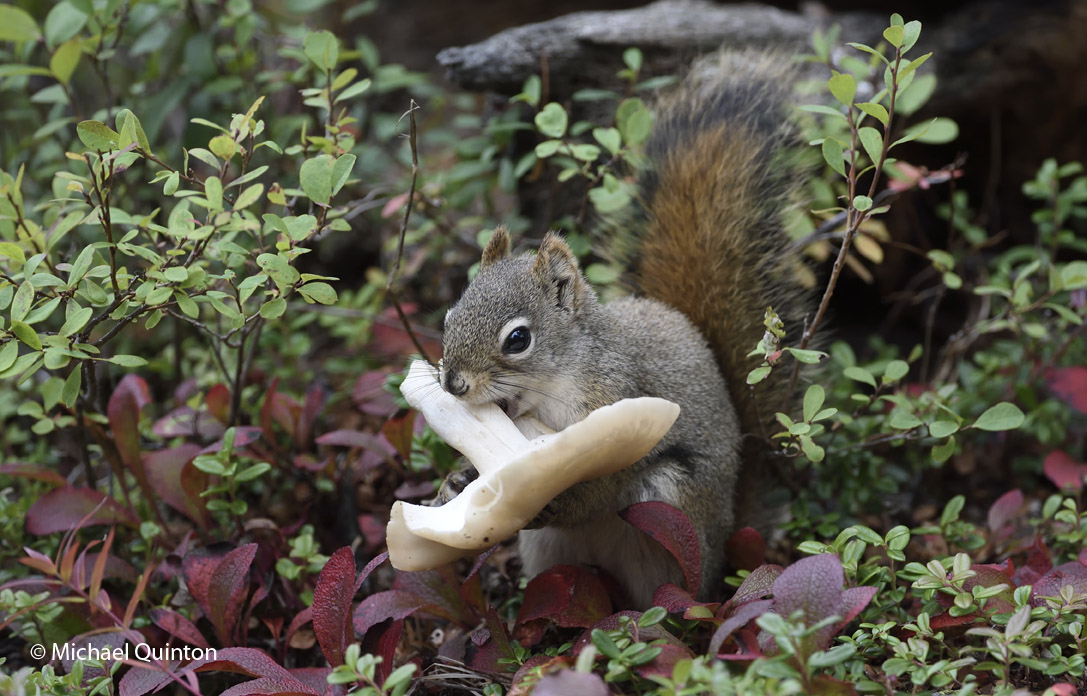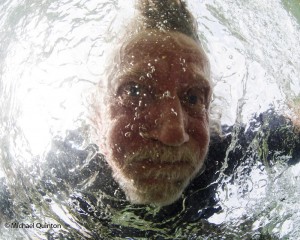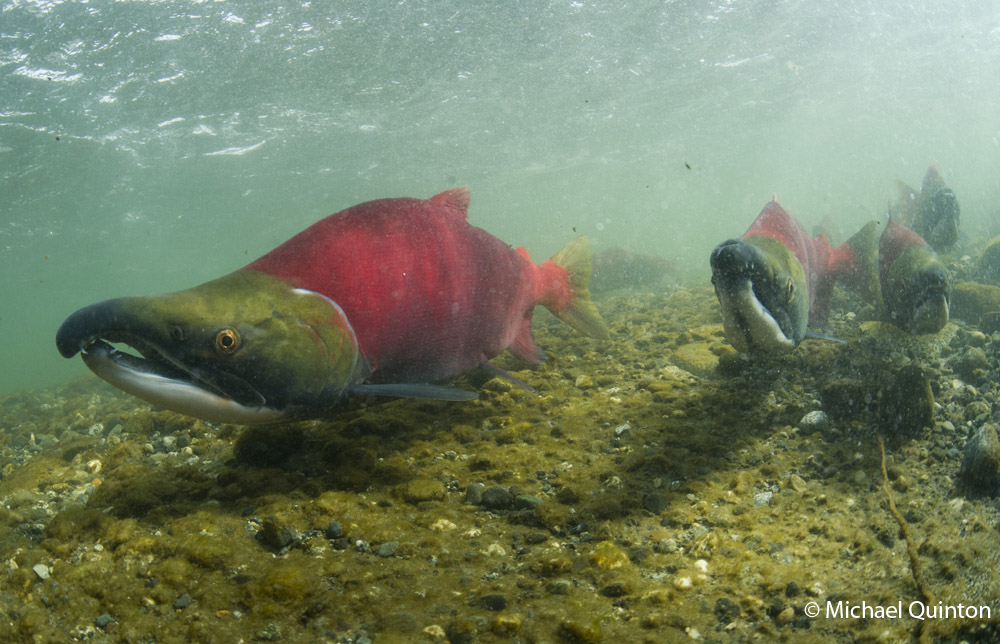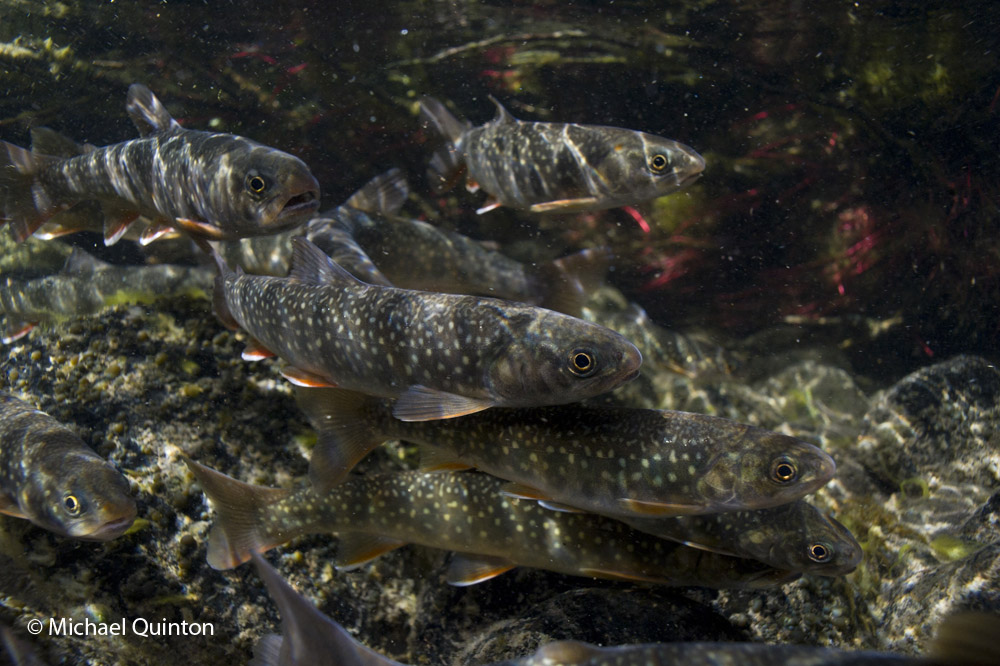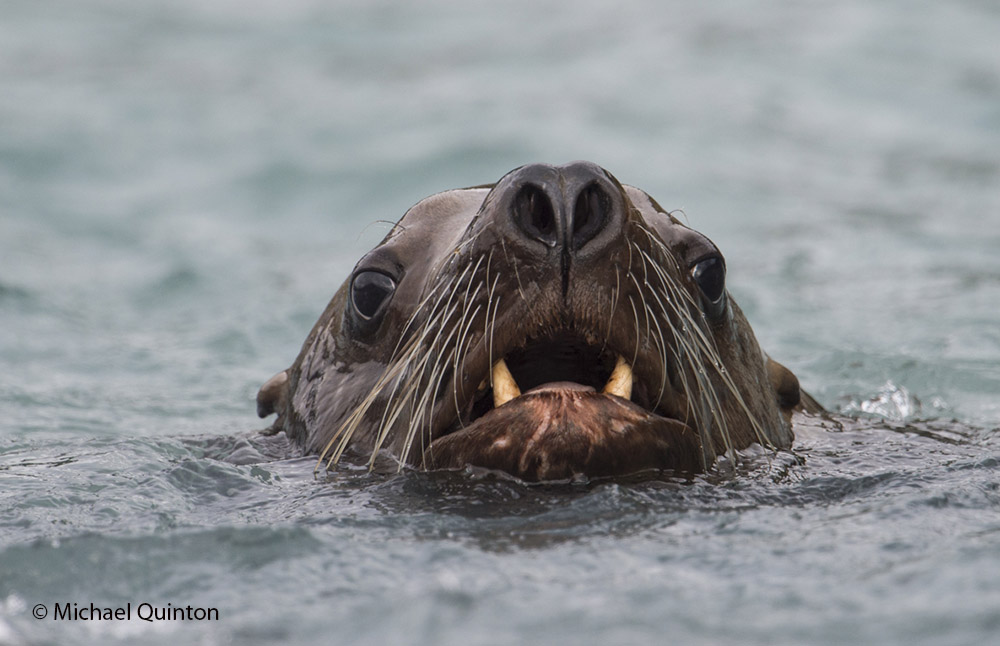Technically, spring has arrived in the Alaskan Interior, but winter is rather reluctant to let go. So for the past three years I have left home in the first week of April to see if spring is having any better luck taking hold along the coast-about a hundred miles away as the raven flies. I am not disappointed. Spring is in full swing. But the weather along the coast is, as usual wet and windy. So once again I settle into a familiar routine, hanging out in a sheltered bay where sea otters congregate during unsettled weather and indulging in the very enjoyable task of observing and photographing the gentle and photogenic sea otters. Continue reading
Tag Archives: Alaska
RUFUS CREEK IN WINTER
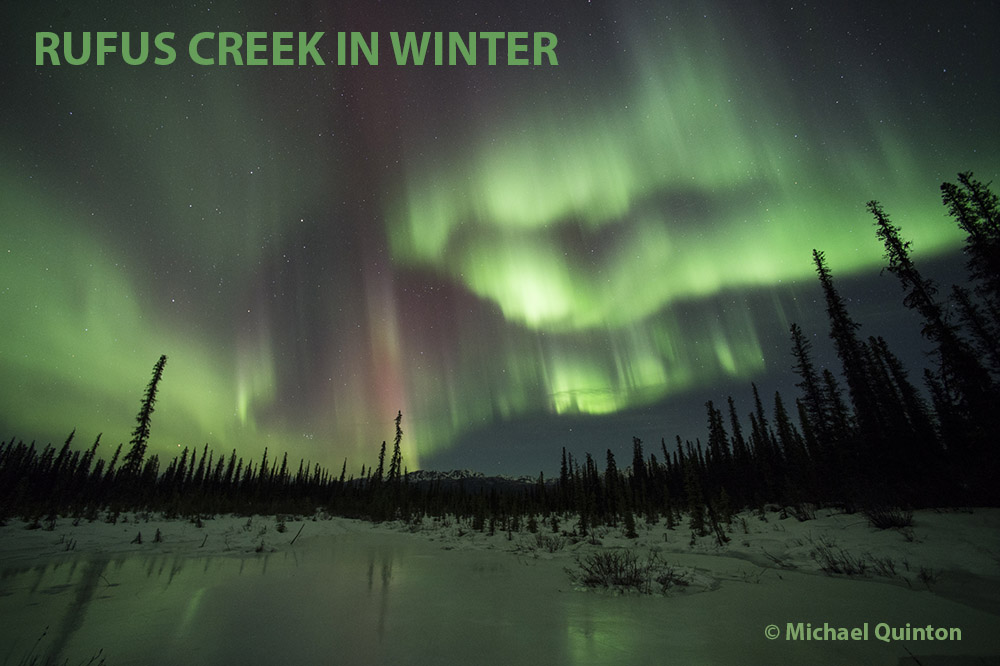 Overflow ice floods Rufus Creek as Aurora Borealis dance.
Overflow ice floods Rufus Creek as Aurora Borealis dance.
Rufus Creek flows through our ten acres of black spruce forest on its way North to the Slana River. The northern boreal forest is a patchwork of dynamic land forms and plant communities, niches that a few hardy species of wildlife can exploit. Diversity of life here is low but the species and settings are spectacular. Continue reading
LAST HOMESTEAD
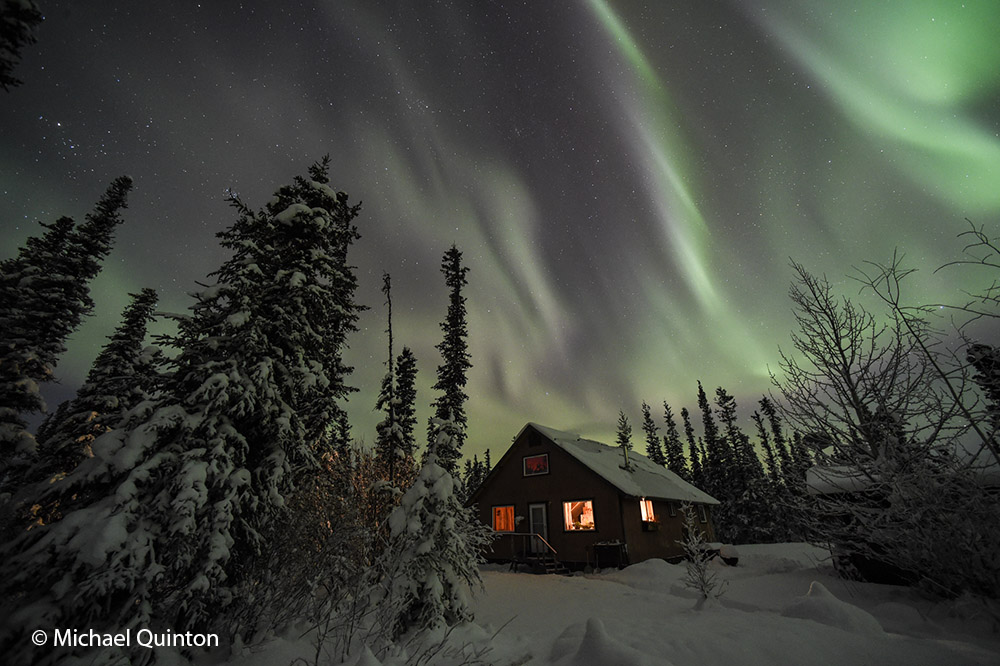 Our home in the wilderness.
Our home in the wilderness.
This post is in support of the recent story that appeared in the February 2016 issue of Country Magazine. The story is about our families life in Alaska. The following photographs are some that did not make the final layout in the magazine. Several Country Magazine readers have requested to see more photos. This is for you. Continue reading
RAMS IN RUT
All summer and fall dall rams have shunned the groups of ewes and lambs. The rams prefer the high country where they hang out in small bachelor bands. With the approach of winter their association begins to fray as they begin to sort out a pecking order. The rams stand in tight groups, displaying their massive curls trying to intimidate. They kick, growl, shove, and finally engage in dramatic displays of head butting. For the most part dominance has been been sorted out when they join the herds of ewes and lambs already on the winter range.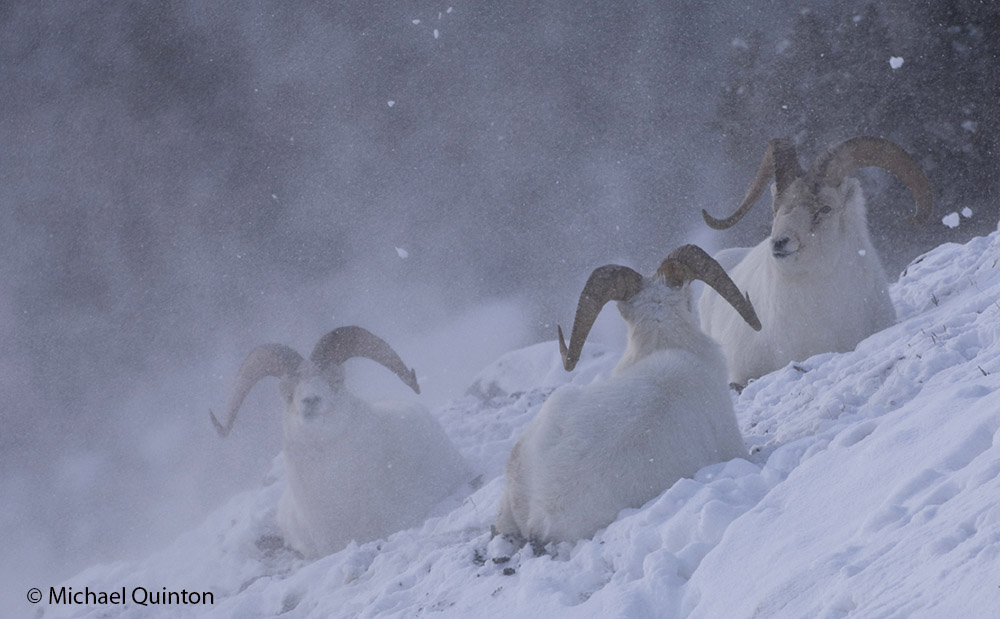 Dall rams Continue reading
Dall rams Continue reading
PHOTOGRAPHING AURORA BOREALIS
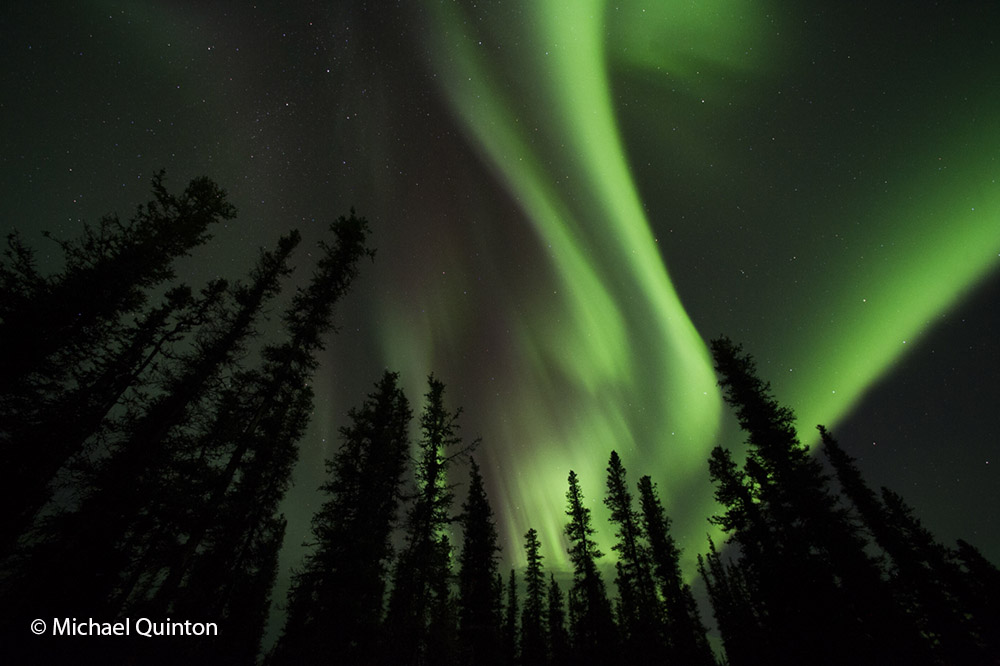 Aurora borealis in my back yard. Slana, Alaska
Aurora borealis in my back yard. Slana, Alaska
The aurora borealis displays are really picking up this year. After a few years of slow aurora activity its an exciting change and a great excuse for stay up late and snapping a few photographs. With todays wonderful digital cameras getting great aurora photos is easier than ever. I remember the day when I had only Kodachrome film with an ASA speed of either 25 or 64. Living in Alaska it could take more than two weeks just to get your processed film returned and check your results. Today you can snap a shot or two check the exposure using your histogram display, adjust your exposure if necessary and shoot away . You can be confident of what you’re getting. Continue reading
RED SQUIRRELS, HOARDING BEHAVIOR
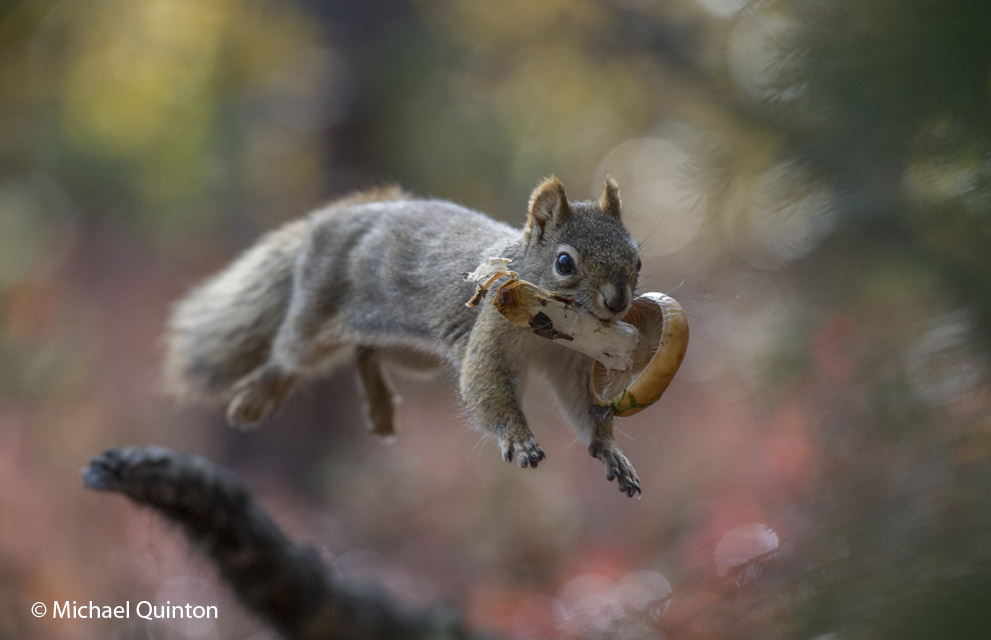 Red squirrel carries mushroom which will be added to its growing winter larder.
Red squirrel carries mushroom which will be added to its growing winter larder.
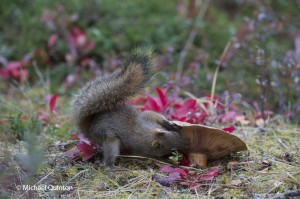 Each fall in preparation for a long, cold winter red squirrels here in Alaska begin a frenzied gathering of food. Their hoarding behavior has very important survival benefits. Gathering food in the fall, before snows arrive will save time and energy. During the short days of winter red squirrels need to conserve their energy. When snows cover the forest floor red squirrels are more exposed to predation and the less time they must spend searching for food the better. Continue reading
Each fall in preparation for a long, cold winter red squirrels here in Alaska begin a frenzied gathering of food. Their hoarding behavior has very important survival benefits. Gathering food in the fall, before snows arrive will save time and energy. During the short days of winter red squirrels need to conserve their energy. When snows cover the forest floor red squirrels are more exposed to predation and the less time they must spend searching for food the better. Continue reading
MUSHROOMS AND RED SQUIRRELS
Red squirrels work overtime in late summer/early fall gathering mushrooms. I spent several days this week photographing them. Though red squirrels can be a nuisance around our wilderness home I try to tolerate them. Our current red squirrel seems to be satisfied living a life in the wild so as long as he minds his own business he is on the payroll. I discourage bad squirrel behavior such as chewing on the house and if they persist, they get that one way ride up to my mean old neighbor ladies place. And she handles red squirrels just like most of my neighbors do. Continue reading
LAST DANCE OF THE SOCKEYE
Taking a peek into a tributary of the Copper River in Alaska’s interior reveals a rarely witnessed but prehistoric cycle of life. Traveling nearly three hundred miles up the Copper River through a soup of glacial silt, sockeye salmon have reached their gravel spawning beds.
Since leaving the ocean and entering fresh water, sockeye salmon undergo dramatic changes. Their silver skin turns to crimson red and their head becomes green. The male sockeye develops a wickedly hooked jawed, an aggressive attitude, and a one track mind to reproduce. Continue reading
DOLLY VARDEN
Dolly varden are not trout but a species of char. In northern Alaska “dollies”can grow to thirty inches and twenty pounds but the dwarf varieties in small interior streams (above) rarely exceed ten inches. Continue reading
STELLER’S SEA LIONS
Adult, male Steller’s sea lion on the prowl in Prince William Sound. Pink salmon, the most numerous of Alaska’s five species of salmon are schooling by the thousands just offshore. The pink salmon returning to their freshwater spawning streams are dogged by a gauntlet of predators including, harbor seals, bald eagles, killer whales and sea otters as well as Steller’s sea lions. Continue reading


